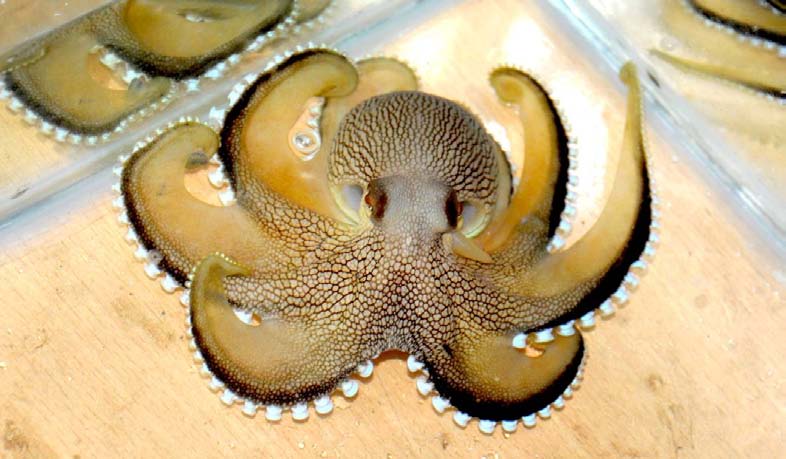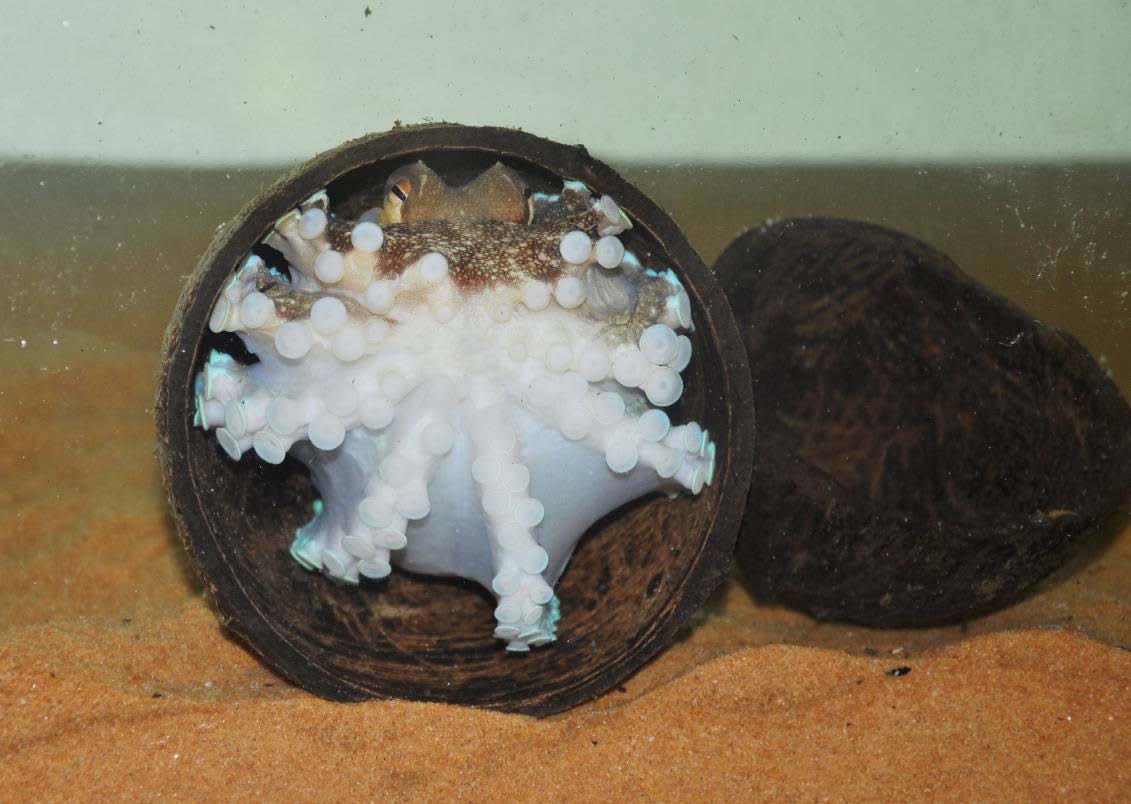Form and Function
The Amphioctopus marginatus is a unique organism because it is the only invertebrate to ever use a tool as a function (Marshall 2009). According to Julian Finn, Tom Tregenza and Mark Norman, a tool is defined as a beneficial object that is not used right away; it is saved for later use (Finn et all. 2009). The Veined Octopus was an easy target to predators in the past because it did not have many defensive mechanisms. As a result of this, the octopus has adapted by finding coconut shells and using them as protection. They carry the shell around the ocean floor using a form of locomotion called ‘stilt-walking’ and ‘bipedaling’ (Sreeja and Bijukumar 2013). Stilt-walking happens when the octopus sits on the coconut shell almost as if it were sitting in a bowl. It suctions the coconut up using a few of its tentacles, walking on the ocean floor with its other tentacles (Sreeja and Bijukumar 2013). The locomotion can also be called bipedaling because it only uses two of its extremities to walk while the other six legs are used to hold up the shell (Sreeja and Bijukumar 2013). The coconut serves as no protection while the octopus is moving, and uses a lot of energy proving that it is unbeneficial to the organism while transporting the shell. The Veined Octopus then crawls into the coconut shell and puts the other half of the shell over itself so it has a safe, enclosed space. Thus the coconut shell is a tool to the Veined Octopus (Finn et all. 2009). According to Matt Kaplan, not even chimps have this sophistication to use an object to cover their heads (Kaplan 2009). It has been hypothesized that these invertebrates used more natural kinds of shells such as ones from clams and other crustaceans in the same way, but they have adapted to using a more efficient shell of coconuts. When the human population increased so did the use of coconuts, resulting in humans discarding their remains of the coconuts into the ocean. The Veined Octopus then recycled the shells for a better use (EOL 2013).
Octopi also have their own unique way of locomotion without the shell; they use jet propulsion powered by water to move forward at high speeds (SeaWorld 2013). Since they live in more benthic parts of the ocean, the octopi will usually crawl using a few of their eight tentacles to swim forward and the others to move across the ocean floor rather than swim (SeaWorld 2013).
A final function the Veined Octopus is able to do is cover its entire body with sand and mud except for its eyes (EOL 2013). This is a form the octopus is able to take on because of the way the octopus is shaped. Covering itself is used as a defensive strategy as well as a predation strategy. Other defensive strategies for the Veined Octopus include camouflage, crypsis, and the ability to hide because of the absence of an exoskeleton (Sreeja and Bijukumar 2013). According to Sreeja and Bijukumar, crypsis is the ability to change your behavior and the way you look to resemble other creatures (Sreeja and Bijukumar 2013). As you can see, the Veined Octopus has many defensive strategies but its adaptation with the coconut shell is so incredibly successful that it is seen to be the most common form of defense.
To see footage of this amazing organism use a coconut as a tool click here.
To see more interesting facts about this crazy octopus see our facts page or go back to our home page.

